Are you tired of lackluster cold brew that fails to hit the spot? You’re not alone. Many coffee enthusiasts struggle to find the perfect coffee beans for cold brew, resulting in a disappointing cup that lacks the rich, smooth flavor you crave. The secret lies in choosing the right coffee beans, but with so many options available, how do you know which ones will deliver that perfect cold brew experience? Don’t worry – we’ve got you covered!
In this guide, we’ll walk you through everything you need to know about selecting the ideal coffee beans for your cold brew. You’ll discover the factors to consider, the best bean types, and how to experiment with different flavors. By the end, you’ll be equipped with the knowledge to create a cold brew that’s nothing short of extraordinary. Let’s dive in and unlock the secrets to cold brew perfection!
👉 So get barista-level brewing at home with the 🛒 Ninja DualBrew 12-Cup Drip Coffee Maker
Understanding Cold Brew Coffee
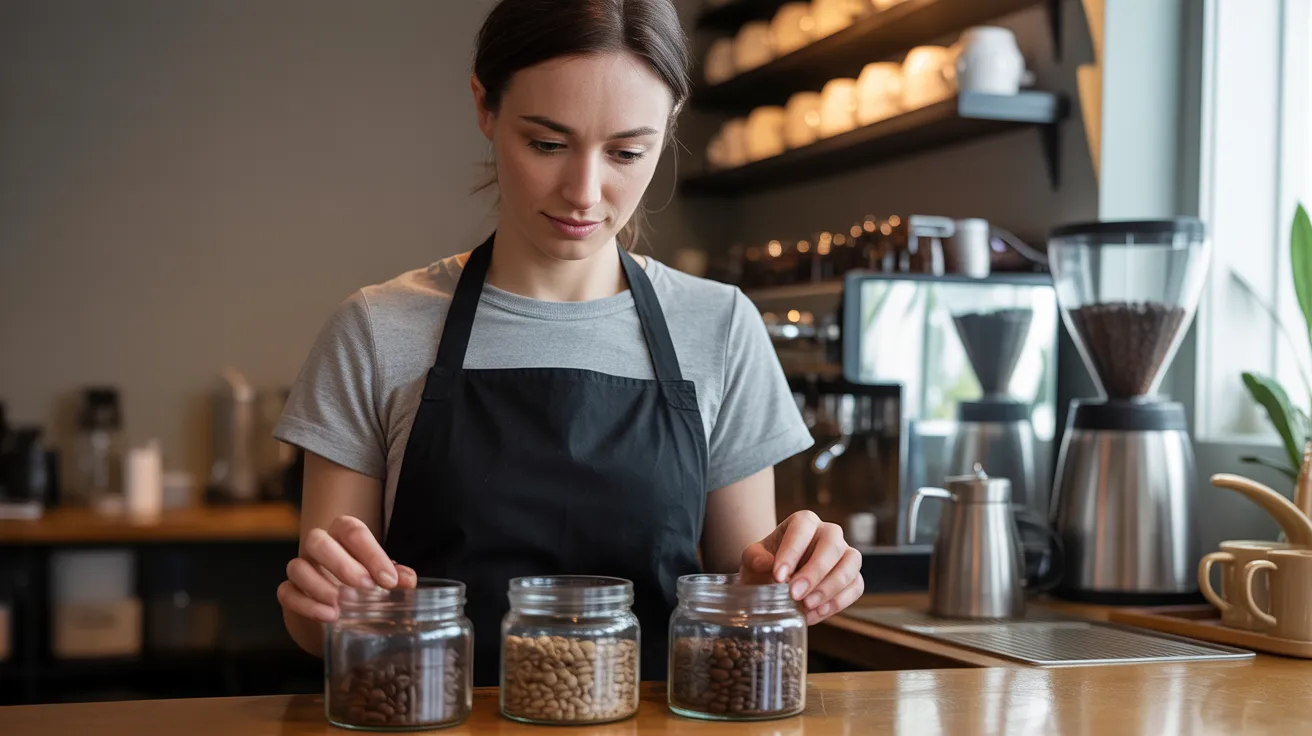
What makes cold brew unique
Cold brew coffee stands out from traditional brewing methods due to its unique preparation process. You steep coarsely ground coffee beans in cold or room temperature water for an extended period, typically 12-24 hours. This slow extraction method results in a smooth, less acidic, and naturally sweeter coffee concentrate.
Benefits of cold brew
You’ll find several advantages to choosing cold brew over regular hot coffee:
- Lower acidity: Easier on your stomach and teeth
- Smoother taste: Less bitter and naturally sweeter
- Higher caffeine content: More energy boost per serving
- Longer shelf life: Stays fresh in the refrigerator for up to 2 weeks
- Versatility: Can be served hot or cold, and used in various recipes
How bean selection impacts flavor
Your choice of coffee beans significantly influences the final taste of your cold brew. Here’s how different bean characteristics affect the flavor profile:
| Bean Characteristic | Impact on Cold Brew Flavor |
|---|---|
| Origin | Single-origin beans highlight unique regional flavors, while blends offer balanced taste |
| Roast Level | Lighter roasts provide fruity and floral notes, darker roasts offer chocolatey and nutty flavors |
| Processing Method | Natural processed beans yield sweeter, fruitier notes, while washed beans produce cleaner, brighter flavors |
When selecting beans for cold brew, you should consider your personal taste preferences and experiment with different varieties to find your perfect match. Remember that cold brewing tends to emphasize the inherent flavors of the beans, so choosing high-quality, freshly roasted coffee is crucial for achieving the best results.
Factors to Consider When Choosing Beans
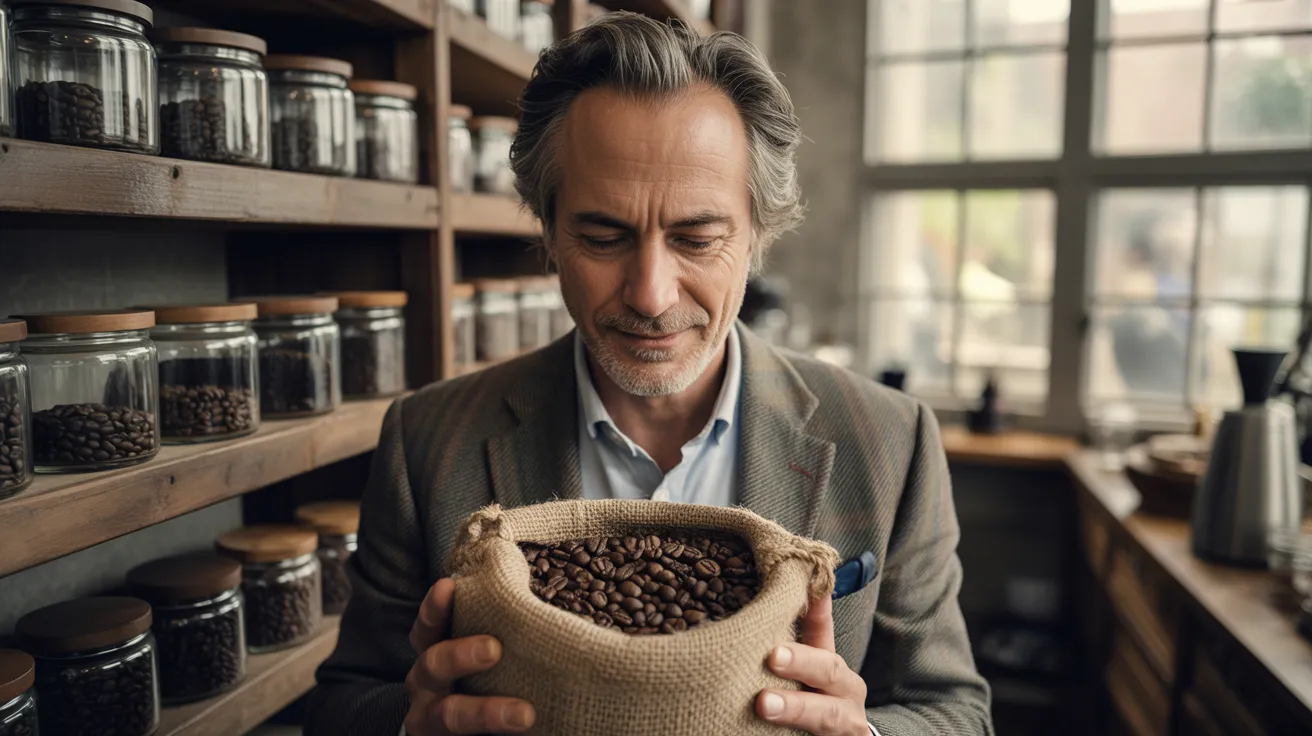
When selecting coffee beans for your cold brew, several key factors come into play. By understanding these elements, you’ll be better equipped to choose beans that will result in a delicious and satisfying cold brew experience.
Roast Level
The roast level of your coffee beans significantly impacts the flavor profile of your cold brew:
- Light roasts: Offer brighter, more acidic notes
- Medium roasts: Provide a balanced flavor
- Dark roasts: Deliver bold, rich flavors
For cold brew, medium to dark roasts are often preferred as they tend to produce a smoother, less acidic final product.
Origin and Growing Conditions
The geographical origin and growing conditions of coffee beans influence their taste characteristics:
| Origin | Flavor Profile |
|---|---|
| Central America | Nutty, chocolatey |
| South America | Balanced, mild |
| Africa | Fruity, floral |
| Asia | Earthy, spicy |
Consider experimenting with single-origin beans to discover unique flavor notes in your cold brew.
Processing Method
The way coffee beans are processed affects their flavor:
- Washed: Clean, bright flavors
- Natural: Fuller body, fruit-forward
- Honey: Balanced sweetness
For cold brew, natural or honey-processed beans often work well, as their inherent sweetness is enhanced by the brewing method.
Freshness
While freshness is crucial for hot brewing methods, cold brew is more forgiving. You can use beans that are:
- 2-4 weeks off roast date for optimal flavor
- Up to 3 months old without significant quality loss
However, always avoid using stale or rancid beans, as they can negatively impact your cold brew‘s taste.
Now that you understand these crucial factors, you’re ready to explore the best coffee bean types specifically suited for cold brew.
Best Coffee Bean Types for Cold Brew
The Best Coffee Beans for a Perfect cold Brew (YouTube Video)
Single-origin vs. blends
When choosing coffee beans for cold brew, you’ll often find yourself deciding between single-origin and blended options. Single-origin beans come from one specific region or farm, offering distinct flavors unique to that area. Blends, on the other hand, combine beans from multiple sources to create a balanced and consistent taste profile.
For cold brew, single-origin beans can be an excellent choice if you’re looking to highlight specific flavor notes. However, well-crafted blends can provide a more complex and rounded taste that many cold brew enthusiasts enjoy.
Arabica vs. Robusta
The two main types of coffee beans you’ll encounter are Arabica and Robusta. Here’s a quick comparison:
| Characteristic | Arabica | |
|---|---|---|
| Flavor | Smoother, sweeter | Stronger, more bitter |
| Caffeine | Lower | Higher |
| Acidity | Higher | Lower |
| Cold Brew Suitability | Excellent | Good for blends |
Arabica beans are generally preferred for cold brew due to their smoother taste and lower bitterness. However, adding a small percentage of Robusta to your cold brew blend can enhance the body and create a bolder flavor profile.
Popular regions for cold brew beans
When selecting beans for your cold brew, consider these popular regions known for producing excellent cold brew-friendly coffee:
- Colombia: Known for medium-bodied beans with balanced acidity and nutty notes
- Brazil: Offers low-acid beans with chocolate and nut flavors
- Ethiopia: Produces fruity and floral beans with bright acidity
- Guatemala: Provides beans with complex flavors, including chocolate and spice notes
- Sumatra: Known for full-bodied, earthy beans with low acidity
Experimenting with beans from different regions will help you discover the flavor profiles that best suit your cold brew preferences. Remember that the roast level also plays a crucial role in the final taste of your cold brew, so don’t hesitate to try various roasts from these regions to find your perfect match.
Flavor Profiles to Look For
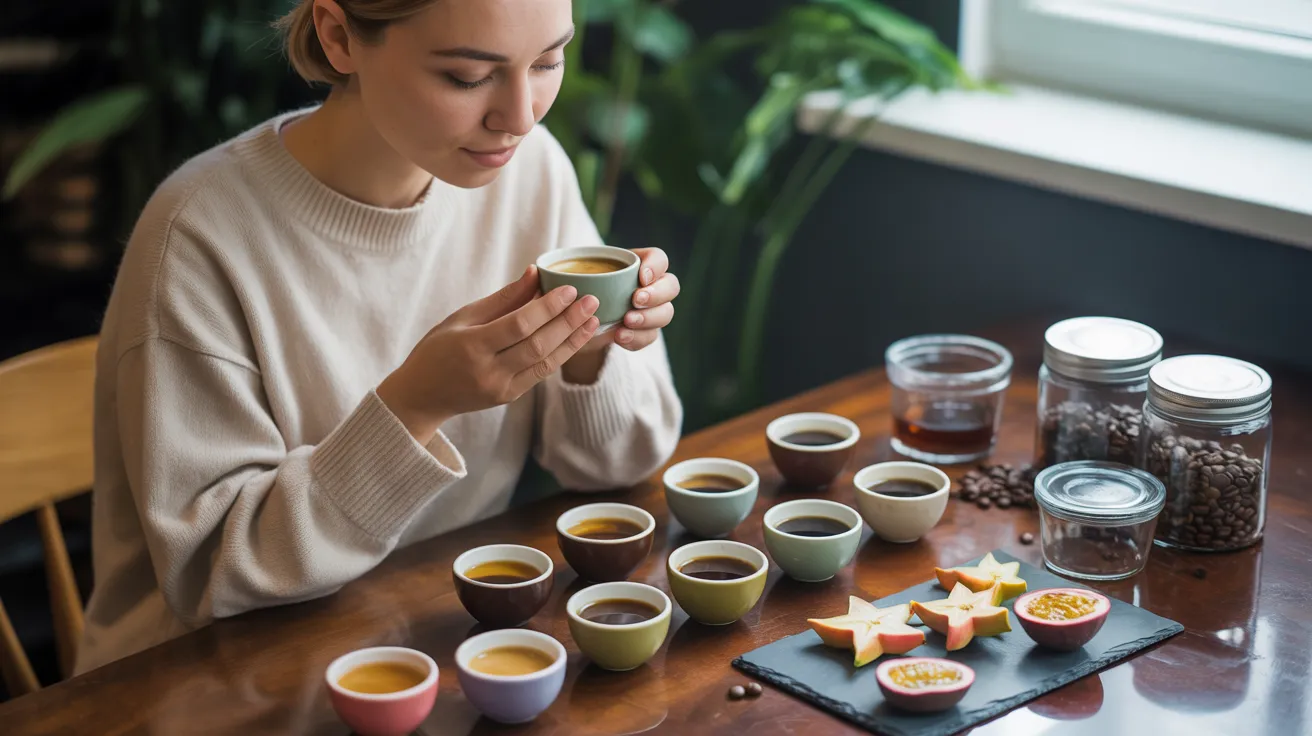
When choosing coffee beans for cold brew, understanding the flavor profiles can help you create a delightful and refreshing beverage. Here are the key flavor profiles to consider:
Chocolatey and nutty notes
You’ll find that beans with chocolatey and nutty notes are excellent choices for cold brew. These flavors often come from medium to dark roast beans, providing a rich and smooth taste that many cold brew enthusiasts enjoy. Look for beans described as:
- Cocoa
- Dark chocolate
- Hazelnut
- Almond
- Walnut
Fruity and floral undertones
For a more vibrant and complex cold brew, consider beans with fruity and floral undertones. These flavors are typically found in lighter roasts and can add a refreshing twist to your cold brew. Seek out beans with descriptors such as:
- Citrus (lemon, orange)
- Berry (blueberry, strawberry)
- Stone fruit (peach, apricot)
- Jasmine
- Lavender
👉 Brew barista-quality espresso anywhere with the 🛒 OutIn Nano Portable Electric Espresso Machine—a self-heating, USB-C powered coffee maker perfect for camping, travel, and on-the-go coffee lovers, compatible with both ground coffee and NS capsules.
Smooth and low-acidity options
Cold brew is known for its smooth, less acidic taste compared to hot coffee. To enhance this characteristic, opt for beans that naturally have low acidity. These beans often result in a mellow, easy-to-drink cold brew. Look for:
| Flavor Profile | Description |
|---|---|
| Caramel | Sweet, buttery notes |
| Toffee | Rich, creamy taste |
| Vanilla | Smooth, subtle sweetness |
| Honey | Natural, mild sweetness |
By exploring these flavor profiles, you can find the perfect beans to create a cold brew that suits your taste preferences. Remember that the brewing process itself can also influence the final flavor, so don’t be afraid to experiment with different beans and techniques.
Grind Size and Its Importance
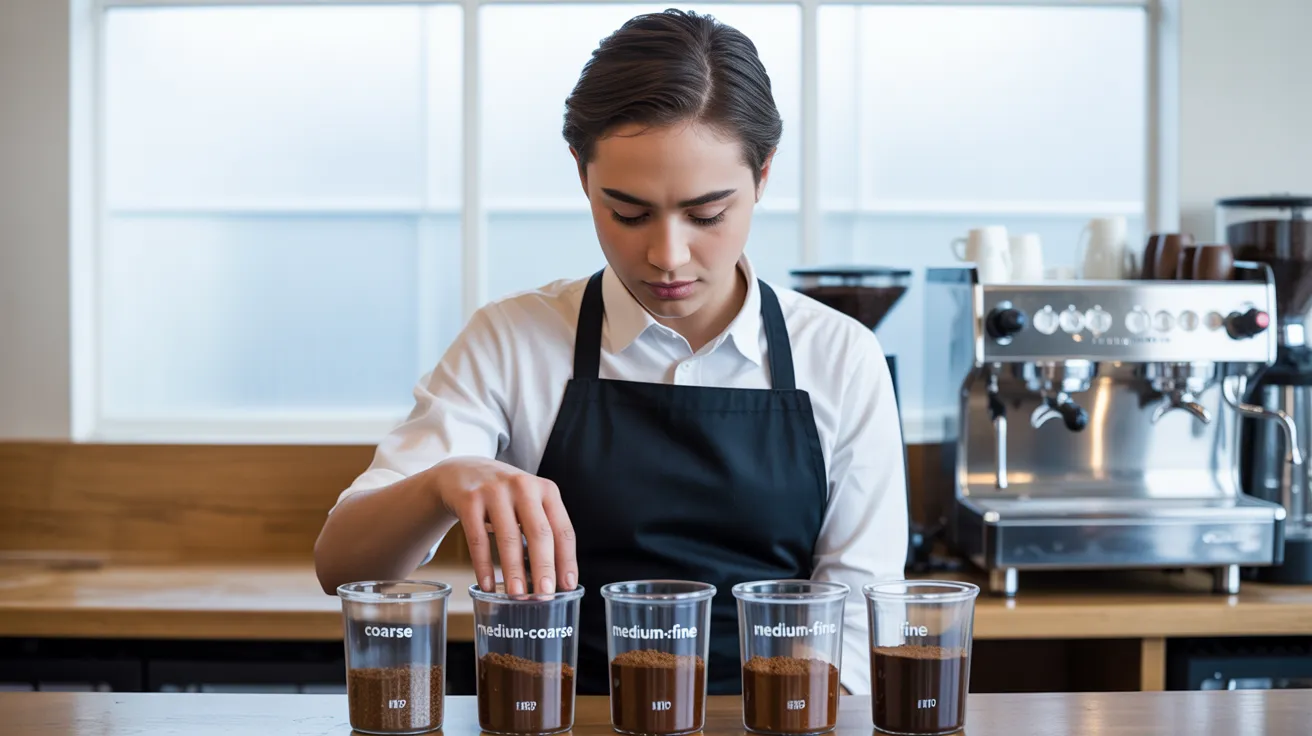
Optimal grind for cold brew
When preparing cold brew coffee, the grind size plays a crucial role in the final product’s taste and quality. For cold brew, you’ll want to use a coarse grind, similar to the texture of sea salt or raw sugar. This coarse grind allows for optimal extraction during the long steeping process.
Impact on extraction and flavor
The grind size directly affects the extraction process and, consequently, the flavor of your cold brew. Here’s how different grind sizes impact your cold brew:
| Grind Size | Extraction | Flavor Profile |
|---|---|---|
| Too fine | Over-extracted | Bitter, harsh |
| Coarse | Optimal | Smooth, balanced |
| Too coarse | Under-extracted | Weak, watery |
Using a coarse grind ensures that the water can easily pass through the grounds during the long steeping process, resulting in a smooth and well-balanced flavor profile.
Pre-ground vs. whole bean options
When it comes to choosing between pre-ground and whole bean coffee for your cold brew, consider the following factors:
- Freshness: Whole beans retain their freshness longer than pre-ground coffee.
- Convenience: Pre-ground coffee is more convenient but may sacrifice some flavor.
- Control: Grinding your own beans allows you to adjust the grind size for optimal cold brew extraction.
For the best cold brew experience, you should opt for whole beans and grind them just before brewing. This approach ensures maximum freshness and allows you to achieve the perfect coarse grind for your cold brew. However, if convenience is a priority, look for pre-ground coffee specifically labeled for cold brew, which typically features the ideal coarse grind.
Sourcing Quality Coffee Beans

Local roasters vs. online retailers
When searching for the perfect coffee beans for your cold brew, you have two main options: local roasters and online retailers. Each has its advantages:
| Local Roasters | Online Retailers |
|---|---|
| Fresh roasts | Wide variety |
| Personal advice | Convenience |
| Support local business | Competitive pricing |
| Try before you buy | Customer reviews |
Local roasters offer the freshest beans and personalized recommendations, while online retailers provide a broader selection and the convenience of home delivery. Consider your priorities and experiment with both options to find your ideal source.
Reading labels and certifications
To ensure you’re getting high-quality beans for your cold brew, pay attention to the information on coffee labels:
- Roast date: Look for recently roasted beans
- Origin: Single-origin beans often have distinct flavors
- Processing method: Affects the bean’s flavor profile
- Certifications: Look for organic, Fair Trade, or Rainforest Alliance labels
These details can help you make informed decisions about the quality and characteristics of the beans you’re purchasing.
Importance of ethical sourcing
Choosing ethically sourced coffee beans not only ensures a better product but also supports sustainable farming practices and fair wages for coffee growers. When sourcing your beans, consider:
- Fair Trade certification
- Direct trade relationships between roasters and farmers
- Transparency in the supply chain
- Environmentally friendly farming practices
By prioritizing ethical sourcing, you contribute to a more sustainable coffee industry while enjoying high-quality beans for your cold brew. With these considerations in mind, you’re now ready to start experimenting with different beans to find your perfect cold brew blend.
Experimenting with Different Beans
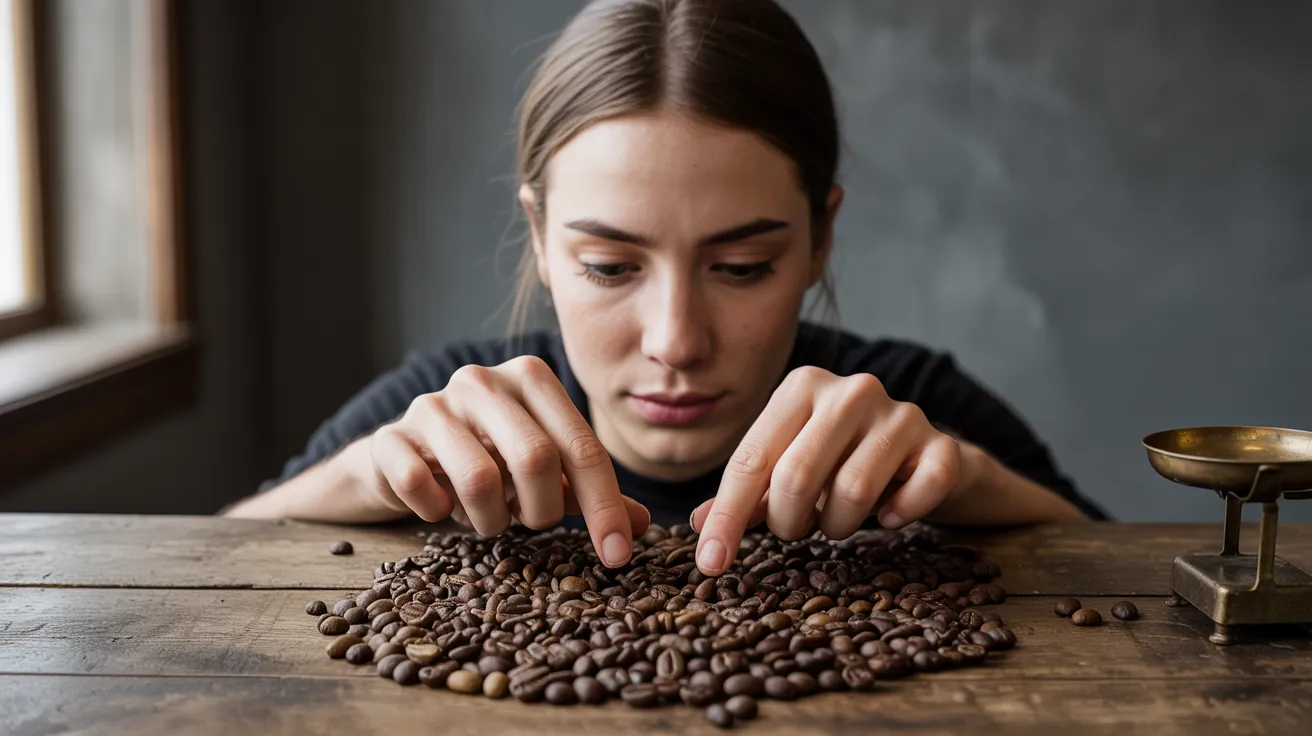
Now that you’ve learned about sourcing quality coffee beans, it’s time to dive into the exciting world of experimentation. Trying different beans is key to finding your perfect cold brew flavor.
Starting with small batches
Begin your coffee adventure by brewing small batches. This approach allows you to:
- Test multiple bean varieties without wasting coffee
- Quickly identify your preferences
- Minimize the impact of less successful brews
Start with 50-100g of coffee beans per batch, adjusting your water ratio accordingly.
Keeping a tasting journal
Document your cold brew experiments in a tasting journal. Record the following information:
| Element | Details to Note |
|---|---|
| Bean type | Origin, roast level, processing method |
| Grind size | Coarse, medium-coarse, etc. |
| Brew time | Hours of steeping |
| Ratio | Coffee to water ratio used |
| Flavor notes | Acidity, sweetness, body, aftertaste |
| Overall rating | Your personal score out of 10 |
This journal will help you track your preferences and refine your cold brew technique over time.
Adjusting ratios for different beans
Different beans may require adjusted ratios to achieve optimal flavor. Here’s a general guide:
- Light roasts: Start with a 1:4 coffee to water ratio
- Medium roasts: Try a 1:5 ratio
- Dark roasts: Begin with a 1:6 ratio
Experiment with these ratios and note the results in your tasting journal. You’ll soon discover the perfect balance for each bean type, allowing you to craft your ideal cold brew every time.
Conclusion
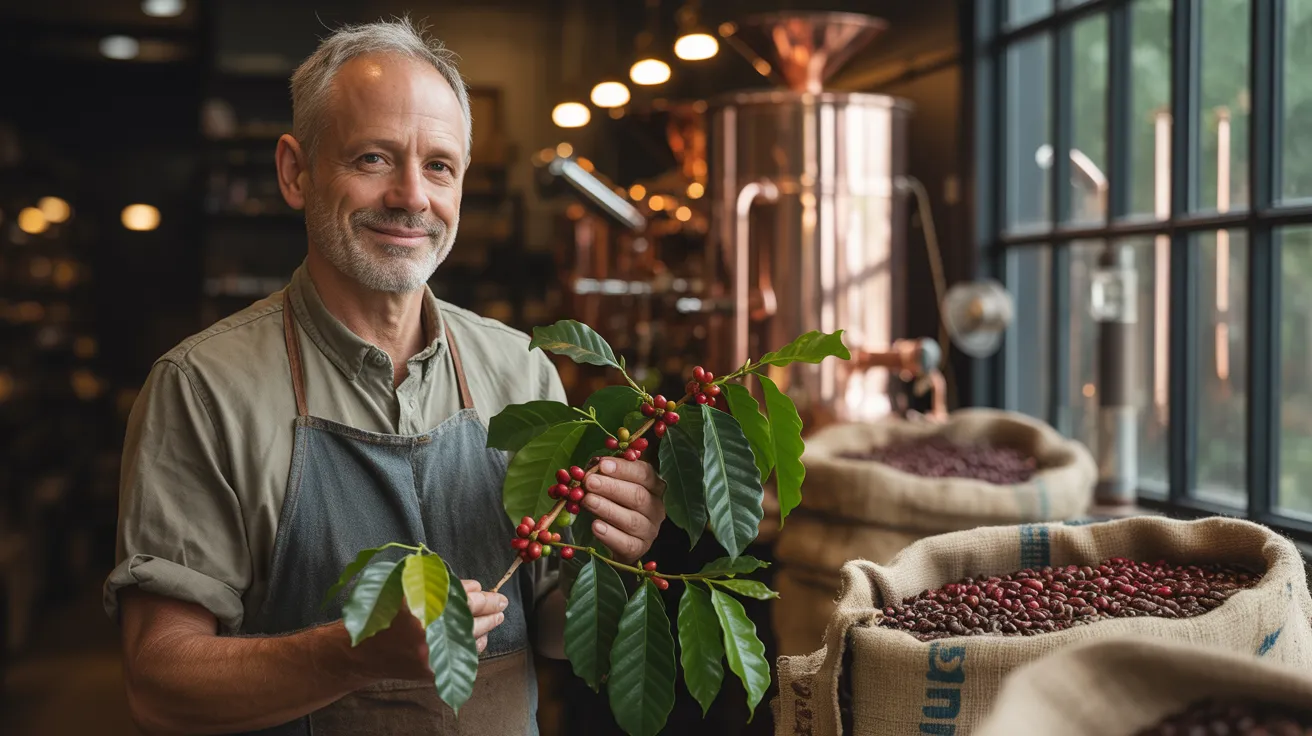
Selecting the right coffee beans for your cold brew can elevate your coffee experience to new heights. By considering factors like roast level, origin, and flavor profiles, you can create a cold brew that perfectly suits your taste preferences. Remember to pay attention to the grind size and source high-quality beans for the best results.
Don’t be afraid to experiment with different types of beans and brewing methods to find your ideal cold brew. With the knowledge you’ve gained from this guide, you’re well-equipped to embark on your cold brew journey. So go ahead, explore the world of coffee beans, and discover the perfect blend for your refreshing cold brew creations. Your taste buds will thank you!
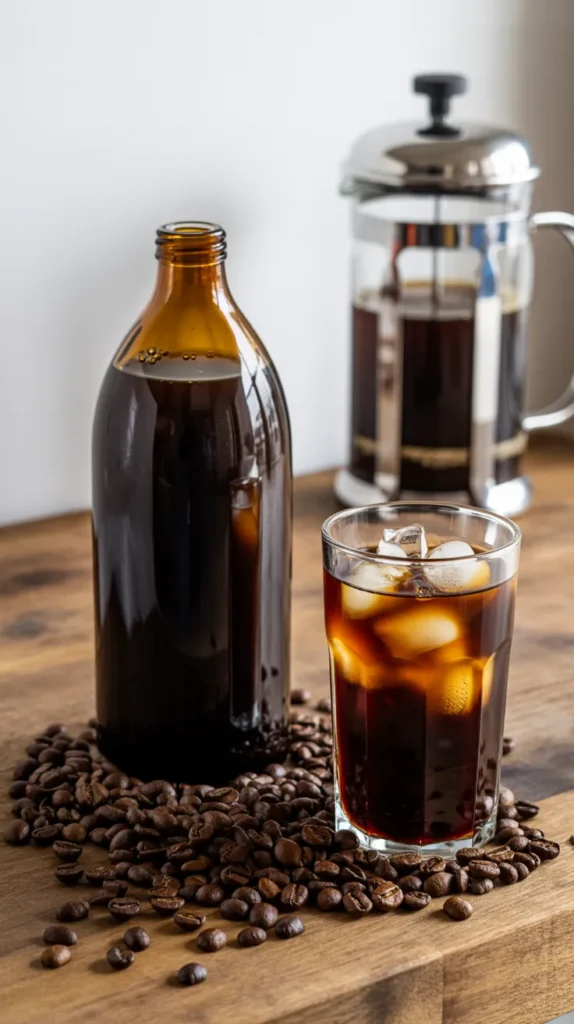
Classic Cold Brew Coffee Concentrate
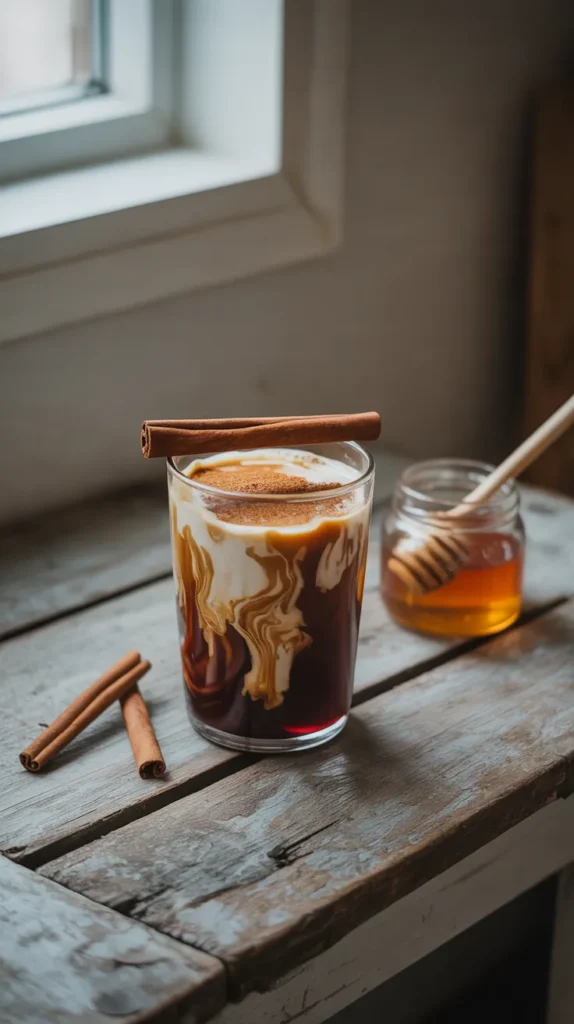
Cold Brew Honey Cinnamon Latte
👉 Brew barista-quality coffee & espresso at home with the 🛒 Nespresso Vertuo Plus by De’Longhi! Designed for one-touch convenience, this sleek grey espresso maker uses centrifusion technology to deliver rich crema & bold flavor in every cup. Enjoy multiple brew sizes, fast heat-up time, and a hassle-free experience with recyclable Nespresso capsules. Upgrade your coffee routine today!
📌 Related Read: Best Flavored Coffee Beans for Every Season
Join the Conversation!
Drop your thoughts in the comments below and let’s chat about all things beverage!
Frequently Asked Questions (FAQ)
For cold brew, medium to dark roasts often work best. They provide a rich, smooth flavor that stands up well to the long steeping process. However, you can experiment with light roasts for a more nuanced taste profile.
When stored properly in an airtight container in the refrigerator, cold brew concentrate can last up to two weeks. Diluted cold brew is best consumed within 2-3 days for optimal freshness.
While whole beans are ideal, you can use pre-ground coffee for cold brew. Just ensure it’s a coarse grind to prevent over-extraction and bitterness.
A common ratio is 1:4 (coffee to water) for concentrate, which you can dilute later. However, you can adjust this based on your preference: the strength for strong, medium, and mild coffee-to-water ratio is 1:3, 1:4, and 1:5, respectively.
Steeping time can vary, but generally:
12-18 hours at room temperature
18-24 hours in the refrigerator
Taste-test to find your ideal steeping time, as longer steeps can result in a stronger, more robust flavor.



